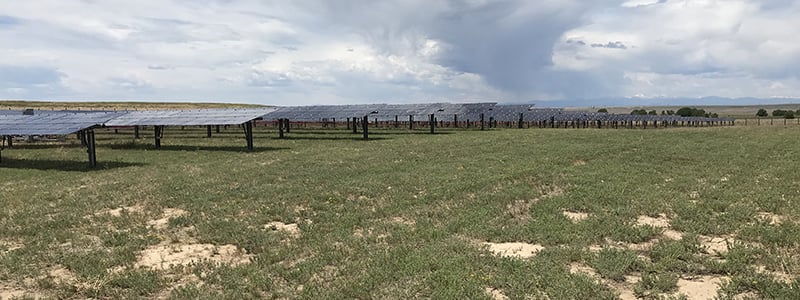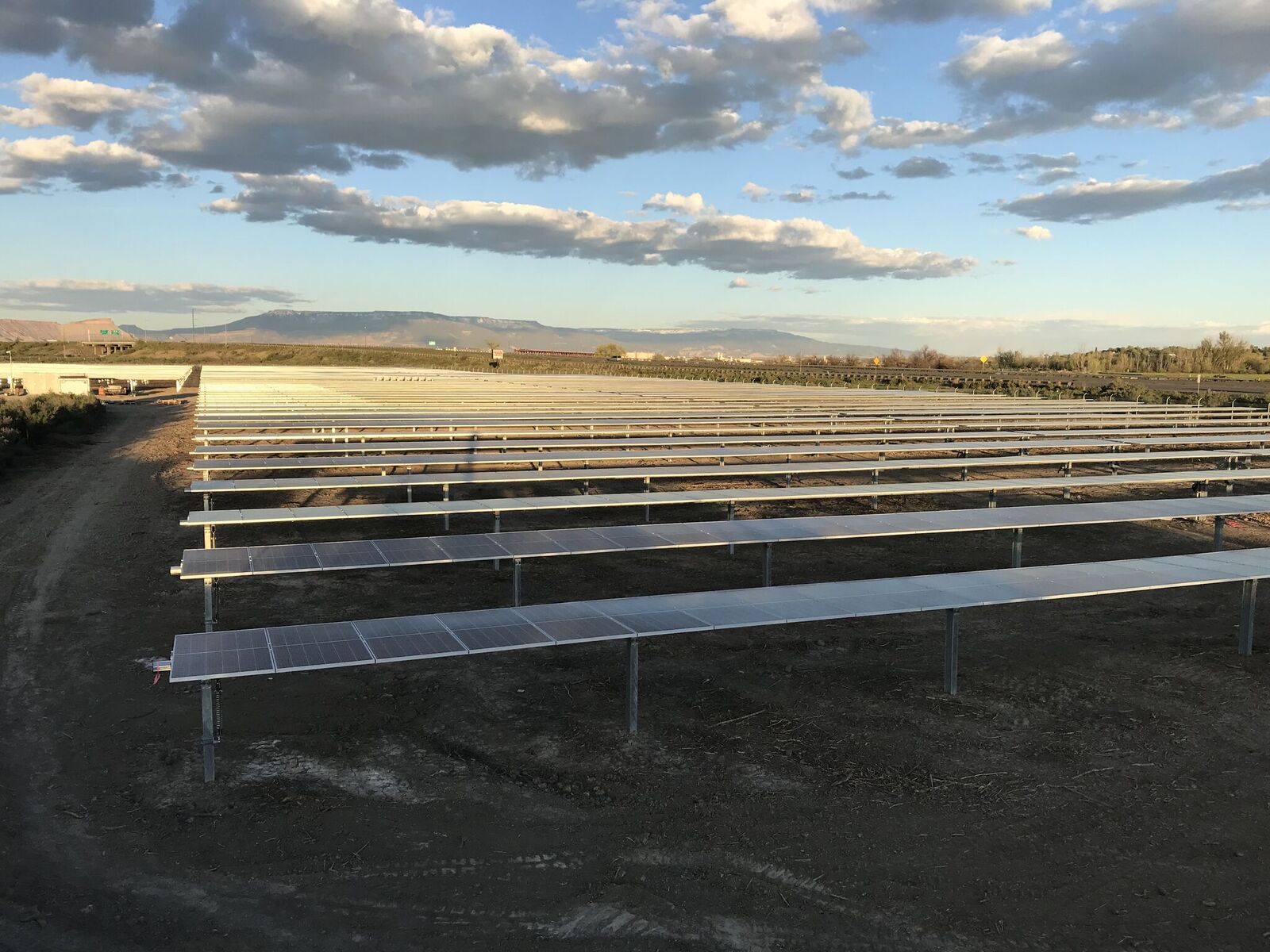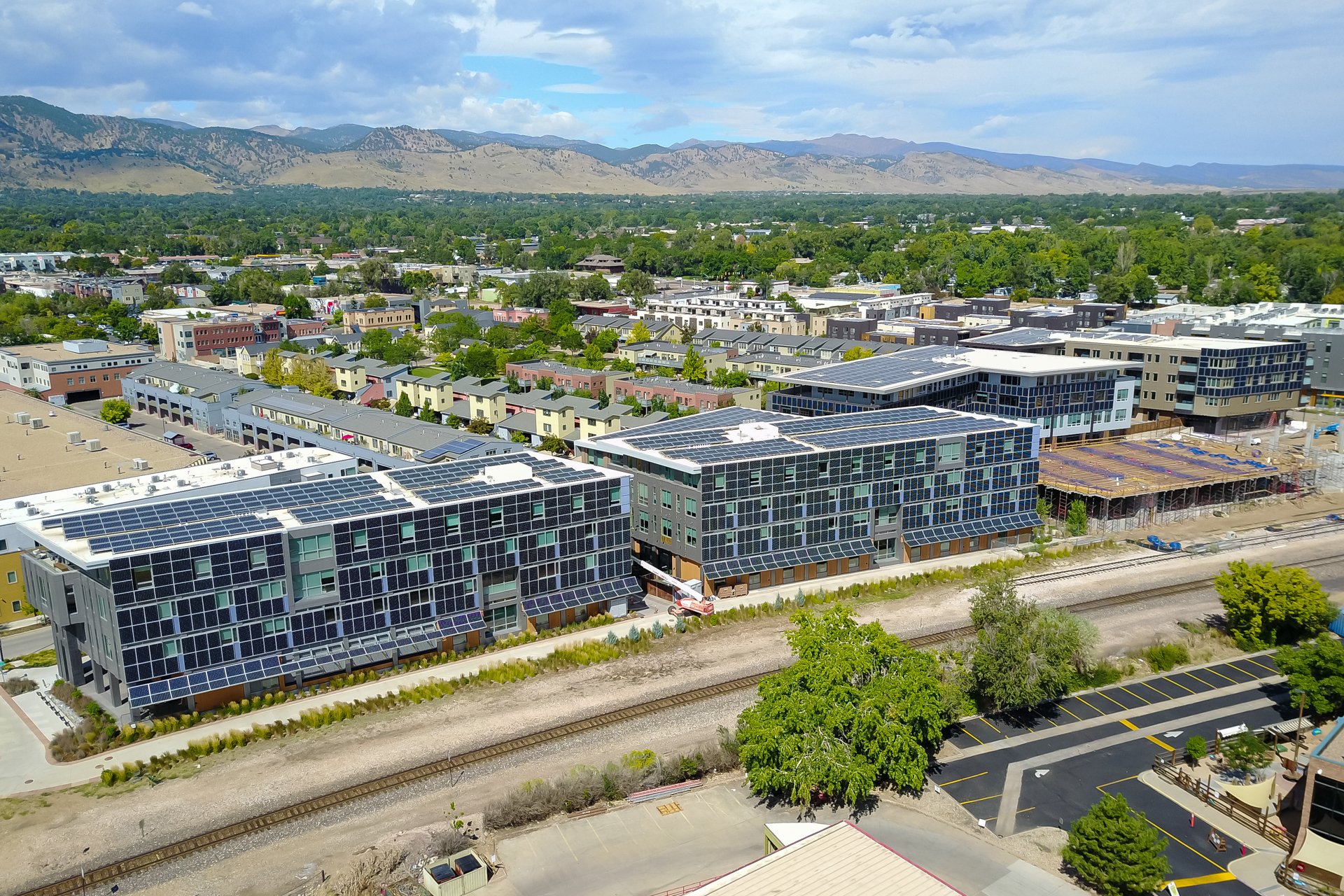What Makes A Good Solar Garden Site
December 1, 2019

As the number of solar energy farms installed around the country has increased year over year, more and more landowners are considering whether or not their property would be a good fit for a solar project. Many landowners have likely been approached by solar developers already, and yet others may have heard the general idea that a site needs to be flat, clear, and dry to be a good fit for solar. While this describes some of the requirements in broad brushstrokes, it leaves out some of the key details that are essential in the site vetting process. It’s worth noting that it is rare to find a “perfect” site, and developers will do their best to come up with a creative solution to make a site work for a project. This post helps further explain what solar developers look for in a site and should help landowners better understand whether or not their site is a good fit to host a solar farm.
How Much Land is Required?
Solar farm sizes can vary drastically depending on what policies exist in a particular location and the type of company developing the site. Community solar farms are generally medium scale project requiring anywhere from five to 40 acres. However, for larger utility scale projects, it is common for developers to lease hundreds of acres for a single project. Utility scale projects may actually rely on combining several neighboring parcels together to achieve the amount of land necessary for the project goal. A general rule of thumb that can be used for farm size is that each DC megawatt requires approximately five acres of buildable land. The size limitations of a solar farm can be determined by legislation, utility policy, electrical constraints of nearby infrastructure, or the business model of the solar developer.
One of the first things any solar developer will look at when vetting a site is the topography and landscape. Generally speaking, the flatter a site is, the better it will be for solar development. That said, a site does not have to be perfectly flat for it to work for solar. In fact, it can be beneficial for sites to have a slight slope to the south or east to increase the system’s exposure to the sun. In addition, developers have been able to construct projects on sites that have a gentle grade and even rolling hills. In certain instances, developers can consider doing some earthwork and light tree and shrub removal to prepare a site. However, this can add a significant cost to the project and may ultimately kill a project’s viability.
Following topography, the next variable solar developers will consider whether or not a site has significant floodplain or wetland issues. Solar farms cannot be constructed within a 100- or 500-year floodplain, and there cannot be any wetlands in the proposed farm area. If landowners are not sure if they have wetland or floodplain limitations on their site or think the maps provided by federal agencies are incorrect, developers can work with the appropriate agencies to verify the actual hazard boundaries. Developers have found ways to build around these hazards in the past. However, it is often a non-starter for project development.

Solar Farm Zoning and Permit Considerations
In order to construct a solar farm, developers must work with the local authority having jurisdiction (AHJ) to obtain the appropriate land use, zoning, grading, construction, and electrical permits. It’s helpful that a site be located within a jurisdiction that has either established a protocol for permitting solar farms or is willing to work with developers to identify appropriate permitting requirements. While most cities and counties have either created solar specific rules or have qualified solar within an appropriate existing category, other AHJs require an overly cumbersome permitting threshold. For many solar farms, these exhaustive permitting requirements can be time and capital intensive for a project to meet already tight budgets and construction deadlines. Whenever possible, solar developers are always willing to work with an AHJ to develop appropriate permitting requirements, guidelines, and procedures.
Whether a developer is building a project on ten acres or a thousand, they must locate their project near a utility’s infrastructure. For community solar gardens, developers prefer to be adjacent to three-phase distribution lines and hopefully close to a substation as well. While a project can be remotely far from a substation, it is imperative there is ample three-phase distribution line capacity on or near the site. Once a project is constructed, it will connect directly to (or “tap into”) into these distribution lines to transfer the energy generated by the solar facility to the electrical grid. If there are not distribution lines near a site, a developer will be forced to pay for the installation of lengthy distribution extensions to reach the site. This adds significant cost to a project and can prevent a site from being a viable fit for a project.
Finally, when determining whether or not a site works for solar, it is also important to consider if solar is a good fit for the landowner. Most landowners who lease their land to solar developers do so for financial reasons. For sites that have historically been used for agricultural production, solar may make sense if a landowner has historically utilized the land for lower value commodity crops, the site has limited access to water (often referred to as “water rights”), or the site has rocky or unproductive soil. Solar can also be a good fit for industrial or commercial properties that have limited site access, which prevents development opportunities. If a site is nearby certain industrial uses such feedlots, sewage or waste-water treatment plants, storage facilities, or other commercial-industrial uses, solar tucks in nicely. Whatever the site has historically be used for, it is key that the landowner is motivated to lease their land for the long-term contract that is typically required for a solar farm.
If you own land and are interested in learning whether or not it is a good fit for a solar farm, please reach out to us at Land@pivotenergy.net. One of our project developers is happy to look at your site and walk you through the viability of a project working.


